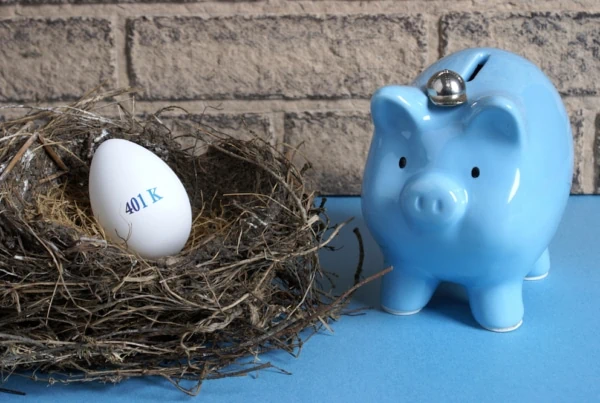If you sat down right now and started writing up a quick-hit retirement plan, I think you’d identify most if not all of the major expenses you would need to cover: health care, housing, food, and so on.
But there are a few expenses that fly under the radar despite being significant enough that they could alter the course of your retirement.
You don’t want your retirement savings to die by a thousand cuts. And that means looking around corners to find the potential blind spots in your budget.
Here are several expenses that might be missing from your retirement budget. Remembering to include these costs will give you a much more accurate picture of how much you’re likely to spend—and thus, how large your nest egg must be to ensure it survives your entire retirement.
Disclaimer: This article does not constitute individualized financial advice. The information appears for your consideration, not as a personalized recommendation. Act at your own discretion.
Don’t Forget These Retirement Expenses

If there are holes in your retirement budget, your nest egg could bleed out far quicker than you anticipated, and your post-career years could be a lot less pleasant than you planned for. So it’s important that even the tiniest cracks are accounted for.
With that in mind, here are some retirement costs that too often are forgotten. In no particular order …
1. Transportation

Given that you’d no longer have a daily workplace commute, you’d probably assume your transportation costs would take a nosedive in retirement.
Well, that cost might decline, but transportation is still a noteworthy expense for retirees.
On average, retirees spent $8,065 in annual transportation costs in 2022, according to the Bureau of Labor Statistics. On the upside, that’s much lower than the $12,295 all Americans spent on average. On the downside, that’s still a meaningful line item—one that comes out to about $670 per month.
Why would these costs remain so high?
Some retirees take recreational road trips, frequently drive to family members’ homes, or start up hobbies that involve longer drives. Others decide to stop driving but depend on other modes of transportation—and while some people can lean on friends and family, others need to start paying for more expensive Uber or even taxi rides.
So while your transportation costs will likely decline in retirement, don’t forget to budget for them regardless.
Do you want to get serious about saving and planning for retirement? Sign up for Retire With Riley, Young and the Invested’s free retirement planning newsletter.
2. Home Modifications + Maintenance

As mentioned above, you’ve likely considered housing costs for your retirement, whether that’s a mortgage or rent, as well as utilities.
But what about modifications?
You might not take on anything as adventurous as a whole-kitchen remodel or adding an entire new room. But there are several home renovations many retirees consider, whether that’s to accommodate worsening mobility issues or just to make their post-career years more comfortable. That could include installing ramps, enhancing lighting, adding grip bars to showers and baths, and more.
Don’t forget about maintenance tasks, either. Perhaps you mowed your lawn every day for decades, but once you reach a certain age, that might not seem like a worthwhile or even feasible use of your time—and thus you might need to pay someone to mow every week. When you were younger, you might have cleaned your own gutters and exterior windows, but you might pass that up as you advance in age. So keep these kinds of costs in mind, too.
Related: 10 Reasons Baby Boomers Are Reluctant to Downsize Their Homes
3. Moving

Some people choose to move in retirement once they’re no longer shackled to a certain location for work. Some people want to live closer to family, others want a lower cost of living, and still others just want to experience something different.
The move isn’t always big, either—sometimes people won’t even leave their state or even their city, but instead just move locally to a smaller house, condo, or apartment because they no longer need as much space as they once did.
No matter the reason, if you think you’re going to move—whether right as you retire or further down the road—that cost should be in your budget.
Moving costs vary based on the distance and size of the move. Moving.com data puts the average cost of a long-distance move (1,000 miles) at $4,890, and the average cost of a local move at $1,250. (Estimates assume a move of around 7,500 pounds from a two- or three-bedroom home.)
If you’re downsizing your home (but not your stuff), you might also need to pay storage costs. Not up to the packing job? We wouldn’t blame you—it’s a time-consuming process that can involve a lot of heavy lifting. So you might add packing services to the move, too.
These costs can add up, so don’t get caught off-guard if you think you’ll move at some point.
Make Young and the Invested your preferred news source on Google
Simply go to your preferences page and select the ✓ box for Young and the Invested. Once you’ve made this update, you’ll see Young and the Invested show up more often in Google’s “Top Stories” feed, as well as in a dedicated “From Your Sources” section on Google’s search results page.
4. Travel

Do you have a bucket list of places you want to travel? You’re not alone. Full-time work leaves little time for travel, so many retirees are itching to travel once they have the time to do so.
Unfortunately, most vacations aren’t cheap … and in some ways, travel is more expensive for seniors.
When you’re creating your retirement budget, if you plan to take more trips than you currently do, you’ll need a higher recreation allotment than you did during working years. Per a 451 Alliance survey, retirees take an average of 3.24 trips per year, and about 21% of retirees take five or more trips.
And remember: Travel costs involve more than just the flights, hotels, and other expenses you make while abroad. If you take extended trips, you might also need to budget for a house sitter or someone to watch your pets.
Related: How to Choose a Financial Advisor
5. Dental

Medicare will generally tackle all of your medical costs, but dental costs are a stickier wicket.
Preventative dental work is one of the health-related services Original Medicare doesn’t cover. So if you want dental insurance, you’ll either need to purchase a Medicare Advantage plan that offers it or buy individual coverage on your own.
And even if you do have dental insurance, it’s unlikely to cover 100% of non-preventative work. Meanwhile, those who don’t have insurance must often pay completely out-of-pocket for costs.
What do these costs look like?
Let’s look at a common dental expense in retirement: dentures, which can cost hundreds or thousands of dollars. According to insurer Guardian, the average denture costs are as follows:
- Basic dentures: $452
- Immediate dentures: $2,178
- Implant-supported dentures: $3,976
That’s just one potentially high dental expense. Were you to need a full-mouth osseous surgery, the average cost is $7,889. If necessary, full-mouth implants can cost around an astounding $40,000.
Soon-to-be retirees should prioritize maintaining their dental health and have a plan for how to cover dental expenses in retirement.
Related: How Long Will My Savings Last in Retirement? 4 Withdrawal Strategies
6. Spouse’s Passing

No one wants to plan for a spouse’s death, but it’s one of the most financially consequential events that happens to people in retirement.
Immediately, you’ll need money to pay for funeral costs. The median cost of a funeral with a viewing and cremation is more than $6,000. If it’s a viewing and burial, the median cost rises to above $8,000.
Numerous other financial effects will follow. For instance, the living spouse becomes subject to the “widow’s/widower’s penalty.” This occurs when your tax status changes from married filing jointly to single. If you’re not prepared for this change, it could nearly double your tax burden. (And one way to help offset the penalty is by doing a Roth conversion to lower your required minimum distribution, or RMD, requirements.)
Related: What to Do Before Your Spouse Passes Away
7. Giving Money to Children + Grandchildren

For some people, one of the best parts of retirement is having more time to spend with their children and grandchildren.
But spoiling grandkids can get pricey.
A TheSeniorList analysis found that grandparents contribute an average of $3,948 to their grandkids every year. That’s a lot of money, and it’s not problem-free. For instance, about 20% of grandparents feel pressured to give more than they can afford. And alarmingly, 10% delayed retirement or took on debt to help out grandchildren.
That number might seem high, but it’s an easy number to hit if you take them on vacations or travel to see them, offer to help with education costs, or pay with extracurricular activities.
Anyways, you absolutely don’t want to forget to account for any retirement expense that stretches into the thousands of dollars each year. Be realistic with how much you can afford to budget to spend on other people.
Want to talk more about your financial goals or concerns? Our services include comprehensive financial planning, investment management, estate planning, taxes, and more! Schedule a call with Riley to discuss what you need, and what we can do for you.
Related: How Much Should You Financially Support Adult Children?







![Should You Max Out Your 401(k) Each Year? [Yes...and No] 21 should you max out your 401k each year or invest elsewhere](https://youngandtheinvested.com/wp-content/uploads/should-you-max-out-your-401k-each-year-or-invest-elsewhere-600x403.webp)

